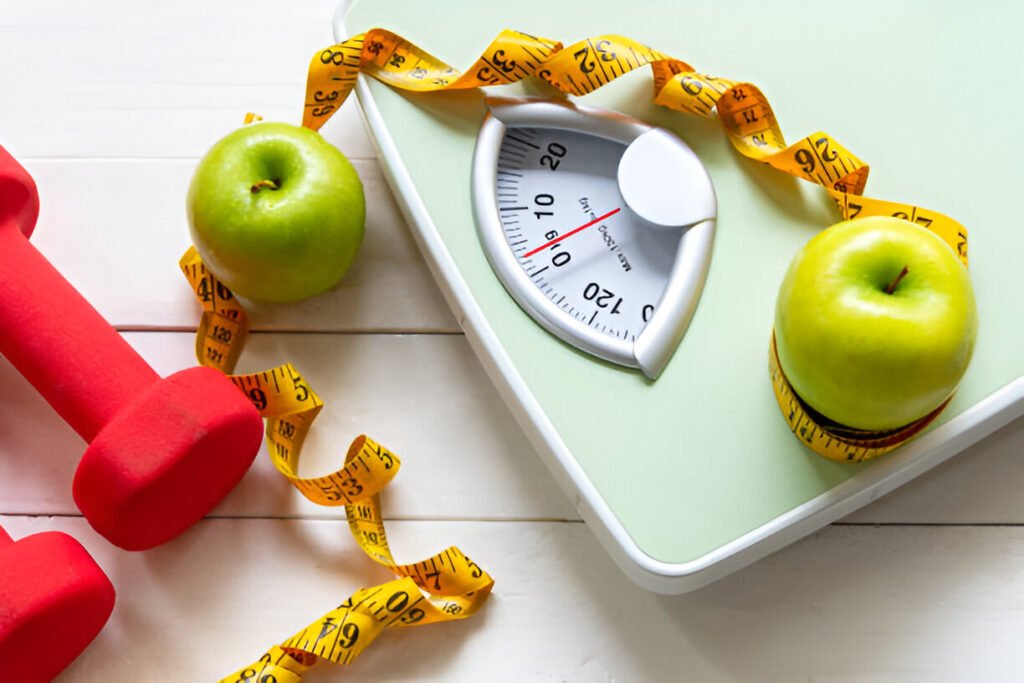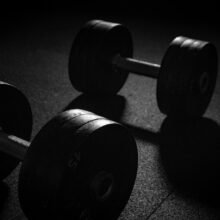Fastest Weight Loss Exercises: Unlocking Your Potential
Introduction to Weight Loss and Exercise
Exercise plays a pivotal role in any effective weight loss strategy, serving as a cornerstone for creating and maintaining a healthy lifestyle. Its importance cannot be overstated, as it not only helps to burn calories but also improves overall physical and mental well-being. Understanding how different types of exercises contribute to weight loss is essential for individuals aiming to shed those extra pounds efficiently.
Primarily, weight loss revolves around the concept of creating a caloric deficit. This means expending more calories than one consumes, prompting the body to tap into fat reserves for energy. Exercise facilitates this caloric deficit by increasing the number of calories burned daily. However, it’s important to remember that not all exercises are created equal when it comes to weight loss.
Cardiovascular exercises such as running, cycling, and swimming are typically the fastest weight loss exercises. These activities elevate the heart rate, increasing calorie burn and enhancing cardiovascular health. Alternatively, strength training exercises, including weightlifting and resistance training, contribute by building and preserving muscle mass. Enhanced muscle mass boosts resting metabolic rate, meaning the body burns more calories even when at rest. This aspect is crucial in maintaining long-term weight loss.

Incorporating high-intensity interval training (HIIT) into your routine offers another effective strategy. HIIT combines short bursts of intense activity with periods of rest or low-intensity exercise. This method not only maximizes calorie burn in a shorter timeframe but also keeps the metabolism elevated for hours post-workout. Thus, it is often heralded as one of the fastest ways to lose weight through exercise.
Exercise also helps maintain a healthy metabolism, critical for sustainable weight management. Regular physical activity counters the natural decline in metabolic rate that accompanies weight loss, ensuring that the process is not only effective but also sustainable.
In essence, a balanced approach incorporating various forms of exercise—cardio, strength training, and HIIT—can optimize weight loss efforts. This comprehensive strategy not only accelerates fat loss but also supports metabolic health, ensuring lasting results.
High-Intensity Interval Training (HIIT)
High-Intensity Interval Training, commonly referred to as HIIT, is recognized as one of the most effective methods for achieving rapid weight loss. This exercise regime is characterized by short bursts of intense physical activity followed by periods of rest or low-intensity exercise. The underlying principle of HIIT is to push the body to exert maximum effort in a short period, thereby maximizing calorie burn and accelerating metabolic rate.
At the heart of HIIT is its dual-phase structure. In the high-intensity phase, individuals perform an exercise at or near maximum effort for a stipulated duration, typically ranging from 20 to 90 seconds. This phase can include activities such as sprinting, cycling, or vigorous bodyweight exercises like burpees. The subsequent low-intensity phase, which generally spans an equivalent or slightly longer period, allows the body to recover partially, preparing it for the next high-energy burst. This cycle repeats multiple times, forming a complete workout session that can last from 15 to 30 minutes.
Common HIIT workouts combine various exercises, creating routines that keep the body constantly challenged. For example, a typical HIIT session might include a sequence of 30 seconds of sprinting, followed by 30 seconds of walking, repeated for a total of 20 minutes. Another example could be 45 seconds of jump squats, followed by 45 seconds of resting, continued for a specific number of sets. The flexibility of HIIT allows it to be tailored to different fitness levels and preferences, making it accessible and adaptable.
The benefits of HIIT are manifold. Firstly, the intense nature of the workout significantly boosts the number of calories burned within a short timeframe, making it the fastest weight loss exercise for many. Additionally, HIIT sessions elevate the post-exercise oxygen consumption (EPOC), ensuring that the body continues to burn calories at an elevated rate even after the workout has concluded. This after-burn effect is a key factor in sustained weight loss and improved overall metabolic health. Regular incorporation of HIIT into an exercise regimen can thus contribute to more efficient fat burning and enhance cardiovascular fitness.
Cardiovascular Exercises
Cardiovascular exercises are among the most effective ways to promote rapid weight loss and enhance overall fitness. Activities such as running, cycling, and swimming not only elevate your heart rate but also significantly contribute to calorie burning, making them some of the fastest weight loss exercises.
Running is a versatile and straightforward exercise that can be adapted to any fitness level. Starting with a brisk walk and gradually progressing to light jogging and full-paced running helps in maintaining consistency and avoiding injuries. Incorporating interval training, where short bursts of high-intensity sprints alternate with slower-paced recovery periods, can further maximize calorie expenditure and improve cardiovascular endurance.
Cycling is another excellent cardiovascular workout. Whether done outdoors on a bike or indoors on a stationary bike, cycling effectively engages the lower body muscles, including the quadriceps, hamstrings, and calves. Beginners should start with flat terrain and gradually introduce inclined paths or hills to increase intensity. To add variety and challenge, participating in a spinning class can offer structured, high-energy sessions that keep motivation levels high.
Swimming provides a full-body workout while being gentle on the joints, making it ideal for individuals with joint issues or those looking for a low-impact exercise alternative. The resistance provided by water helps tone muscles and increase calorie burn. Beginners can start with basic strokes like freestyle and gradually progress to more complex ones such as butterfly. Incorporating interval training by alternating between fast-paced laps and slower recovery laps can enhance the benefits of swimming.
To maximize the effectiveness of these cardiovascular exercises and ensure sustained progress, it is essential to set realistic goals and gradually increase the intensity of workouts. Consistency is key, so aiming for at least 150 minutes of moderate-intensity or 75 minutes of high-intensity cardio exercises per week can lead to substantial weight loss and improved fitness levels. Additionally, combining different cardio activities can prevent monotony and keep the exercise routine enjoyable.
Strength Training and Weight Loss
Strength training plays a crucial role in effective weight loss strategies. Unlike cardio workouts that primarily focus on burning calories during the activity, strength training offers the added benefit of increasing muscle mass, which in turn, helps boost metabolism. A higher metabolic rate means your body continues to burn calories even at rest, making strength training one of the fastest weight loss exercises.
Building muscle through weight lifting and resistance exercises creates a more efficient fat-burning mechanism. Specifically, muscle tissue requires more energy to maintain than fat tissue, consequently leading to a higher calorie burn throughout the day. Integrating weight lifting into your fitness routine helps establish a stronger and leaner physique while promoting long-term weight management.
In addition to traditional weight lifting, resistance exercises such as using bands or bodyweight exercises like push-ups and squats can be highly effective. These forms of exercise target multiple muscle groups simultaneously, maximizing calorie expenditure and muscle toning. For those looking to optimize their weight loss journey, a balanced workout regimen should include both resistance training and bodyweight exercises.
Moreover, strength training contributes to better overall fitness by enhancing muscle strength, improving bone density, and reducing the risk of chronic diseases like diabetes and heart conditions. This holistic approach not only aids in achieving weight loss goals but also in maintaining overall health and well-being.
By incorporating a variety of strength training techniques, you can ensure a comprehensive workout that caters to different muscle groups while keeping the sessions engaging. As a result, combining these exercises creates a sustainable and effective pathway to losing weight, underscoring the importance of a diversified fitness regimen.
Combining various types of exercises into a cohesive workout routine can significantly enhance the efficiency of your weight loss efforts. By integrating high-intensity interval training (HIIT), cardio, and strength training, you can create a dynamic and well-rounded fitness regimen. Variety in workouts is critical to avoiding plateaus and continually challenging the body, which is vital for sustaining weight loss momentum.
Implementing HIIT workouts into your routine can be particularly effective for rapid weight loss. HIIT involves short bursts of intense exercise followed by periods of rest or lower intensity. This not only boosts cardiovascular fitness but also increases metabolism, leading to greater calorie burn even after the workout. Cardio exercises such as running, cycling, or swimming complement HIIT by enhancing cardiovascular health and promoting sustained calorie burning. Meanwhile, strength training helps in building lean muscle, which is crucial as muscle tissue burns more calories than fat, even while at rest.
A sample weekly workout plan to maximize weight loss benefits might look like this:
Monday:
Start the week with a 30-minute HIIT session. Exercises can include sprints, jumping jacks, and burpees, performed in cycles of 30 seconds of intense effort followed by 30 seconds of rest.
Tuesday:
Engage in a 45-minute cardio workout. This could be a brisk run, cycling, or an aerobic dance class.
Wednesday:
Focus on strength training. Perform exercises such as squats, deadlifts, and bench presses for 45 minutes to build muscle mass.
Thursday:
Incorporate a different form of cardio, such as swimming or rowing, for 45 minutes. This keeps the body adapting to new movements.
Friday:
Another HIIT session, this time using different exercises than Monday’s session, ensuring the body remains challenged.
Saturday:
Dedicate this day to full-body strength training. Include compound movements targeting multiple muscle groups, such as lunges, pull-ups, and push-ups.
Sunday:
Rest or enjoy a light activity like yoga or a nature walk to recover and rejuvenate.
By diversifying your workouts and continuously challenging your body, you can effectively prevent plateaus and optimize your weight loss journey.
The Role of Diet and Nutrition
While engaging in the fastest weight loss exercises is crucial for shedding pounds swiftly, the significance of a balanced diet and proper nutrition cannot be overstated. Successful weight loss results from a harmonious synergy between physical activity and dietary habits. To optimize this synergy, one must pay close attention to the macronutrients: proteins, carbohydrates, and fats.
Proteins, found abundantly in lean meats, legumes, and dairy, play an essential role in muscle repair and growth, aiding in recovery post-exercise. Carbohydrates, often deemed the body’s primary energy source, are vital in maintaining stamina and endurance during workouts. Opt for complex carbohydrates such as whole grains, fruits, and vegetables, which provide sustained energy while minimizing blood sugar spikes. While often maligned, fats are necessary for various bodily functions; prioritize healthy fats like those from avocados, nuts, and olive oil.
Creating a balanced diet starts with understanding portion control and nutritional balance. Aim to fill half your plate with vegetables and fruits, a quarter with protein, and a quarter with whole grains. Regular meal planning can further ensure nutritional adequacy, helping to sustain energy levels throughout intense workout regimens. Small, frequent meals, rather than large infrequent ones, can stabilize metabolism and prevent overeating.
Hydration is another key aspect of a comprehensive weight loss strategy. Proper fluid intake aids in metabolism and supports overall bodily functions. Aim to drink at least 8 to 10 glasses of water daily, adjusting based on physical activity levels and individual needs. In addition to water, herbal teas and electrolyte solutions can enhance hydration.
Incorporating the right diet with the fastest weight loss exercises not only accelerates results but fosters sustainable health habits. As such, consistent attention to what is consumed, alongside vigorous physical activity, paves the way for effective and enduring weight management.
Tracking Progress and Staying Motivated
Embarking on a weight loss journey requires not just commitment to fastest weight loss exercises but also a systematic approach to track progress and sustain motivation. Keeping a detailed workout diary or leveraging fitness apps can be instrumental. These tools enable you to monitor your daily routines, pinpoint improvements, and identify areas that may need additional effort. Documenting your activities isn’t just about recording calories burned or weights lifted; it offers a tangible reflection of your dedication and progress.
Setting realistic goals is another cornerstone for effective weight loss. Establishing attainable milestones rather than focusing solely on an ultimate goal can mitigate feelings of discouragement. Short-term goals allow for frequent celebrations of achievement, whether it’s completing a week of workouts or losing the first five pounds. Each milestone crossed is not just a step towards the ultimate target but also an opportunity to boost confidence and sustain drive.
Staying motivated over the long haul can be challenging, and diversifying your routine is key. Varying exercises can prevent monotony and maintain excitement. Whether it’s integrating different fastest weight loss exercises or alternating between cardio, strength training, and flexibility workouts, diversity keeps both mind and body engaged. Furthermore, finding a workout buddy can add a layer of accountability and social interaction. Partnering with someone who shares similar fitness goals can make the process more enjoyable and provide mutual encouragement.
Rewarding yourself is vital in acknowledging hard work and commitment. Rewards don’t always have to be food-related; instead, consider incentives like a massage, new workout gear, or a day off. These rewards can act as motivators, fueling persistence and dedication to your fitness regime.
Tracking progress and staying motivated is as crucial as engaging in the effective exercises themselves. By meticulously monitoring your journey, setting achievable goals, embracing variety, enlisting peer support, and celebrating successes, you can propel yourself towards your weight loss aspirations with unwavering enthusiasm.
Precautions and Safety Tips
Engaging in the fastest weight loss exercise routines requires careful attention to safety to prevent injuries and optimize results. One of the most fundamental precautions is a comprehensive warm-up before beginning any physical activity. A good warm-up increases blood flow to muscles, enhances flexibility, and prepares the body for the demands of exercise. Spend at least 5-10 minutes performing dynamic stretches or light cardio to ready your body for more intense movements.
Equally important is cooling down post-exercise, which aids in gradually lowering your heart rate and promoting recovery. Incorporating static stretches into your cool-down routine can help enhance flexibility and reduce muscle soreness.
Correct form is crucial when executing exercises, especially those designed for rapid weight loss. Poor technique can lead to significant injuries and ultimately hinder your progress. Consider consulting a professional trainer to ensure you perform each exercise correctly, focusing on body alignment and movement precision.
Listening to your body is another essential aspect of injury prevention. Pushing your limits is part of the process, but it’s vital not to ignore signs of overtraining or fatigue. Symptoms like persistent soreness, extreme fatigue, and diminishing performance are indicators that your body needs rest. Adequate recovery time is imperative to allow muscle repair and growth, which contributes to overall fitness and weight loss.
Before embarking on any new exercise regimen, particularly one that involves high-intensity workouts or substantial weight loss goals, it is advisable to consult healthcare providers. This is especially important for individuals with pre-existing health conditions such as cardiovascular diseases, diabetes, or orthopedic concerns. Medical professionals can provide tailored advice and guidelines to ensure that your exercise program is both effective and safe.
By adhering to these precautions and safety tips, you can significantly reduce the risk of injury, stay consistent with your workouts, and achieve the weight loss results you desire. Remember, safety and effectiveness go hand in hand in any fitness journey.


